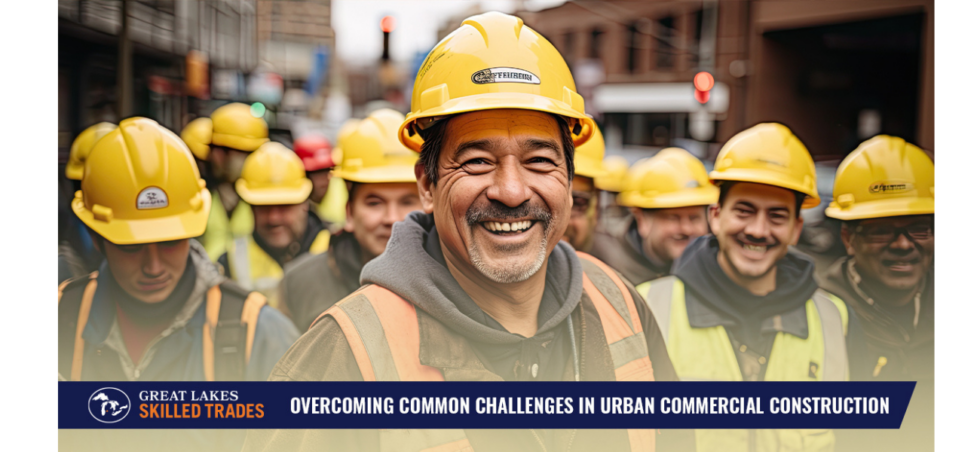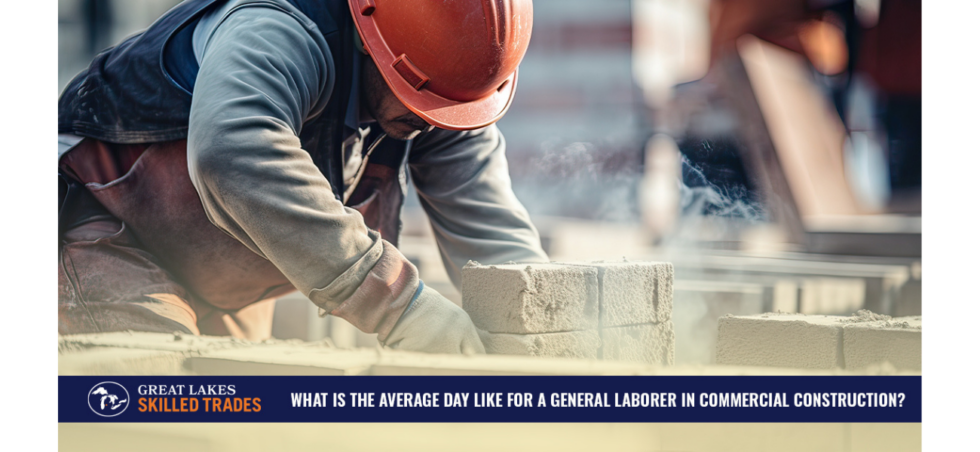Hibernation is for bears. Contractors, they’ve still got bills to pay, businesses to grow—so they’ll find ways to get as much work as possible done in the frigid winter. There’s definitely opportunity, but there is a big proviso: There are a whole new set of construction safety concerns to be aware of during the winter. That’s what this blog post is about: How contractors can work safely during winter.
We’ll start by considering the number one concern for winter construction: cold stress. Then we’ll look at how to avoid slips, trips, and falls on the job site during winter. When you finish the article, you should have some actionable items you can put into practice this winter.
Ready? Let’s go.
Cold stress: winter’s main challenge
In the summer months in the Great Lakes area, the concern is heat stress in its several forms: heat cramps, heat exhaustion, and heat stroke. During the winter months, the concern is cold stress in its several forms: hypothermia, frostbite, and trench foot.
What is cold stress? The body works hard to maintain its temperature in the cold. As the surrounding cold air draws heat away, the body works to keep the internal core—the chest and abdomen—warm. This shifts blood flow away from the skin, hands, arms, feet, and legs. These areas quickly cool, putting workers at risk for hypothermia, frostbite, and trench foot.
- Hypothermia occurs when your body loses heat faster than it can produce it. Symptoms include fatigue, confusion, disorientation, excessive shivering, and loss of coordination.
- Frostbite is the crystallization of tissue in freezing temperatures. Ice begins to form inside and around skin cells. The ice blocks the movement of blood through capillaries, depriving body tissue of oxygen and nutrients. Early warning signs are numbness, a pins-and-needles feeling on the skin, blue and blotchy skin, and aches in the affected area.
- Trench foot, also called immersion foot syndrome, occurs when one’s feet stay wet and cold. Basically, trench foot is your feet rotting. To prevent heat loss, the body constricts blood vessels to shut down circulation in the feet. If left untreated, one’s toes can fall off! Early warning signs are redness of the skin, swelling, numbers, and even blisters.
Ways you can avoid cold stress on a construction site:
- Be aware of weather forecasts. Keeping an eye on the weather forecast will prevent you from sending your workers out in dangerous conditions such as a blizzard or hailstorm. Regularly check the weather through your local news and the National Weather Service.
- Train your workers. Make sure to give your on-site team a refresher on winter-related health and safety hazards. Don’t assume your workers know how to work outside during winter. Make sure your workers know the warning signs of cold stress. If a worker exhibits any signs of illness or injury, emergency help must be called immediately.
- Require the correct clothing and gear. Workers should wear layers whenever necessary, including an insulating, moisture-wicking base layer and a waterproof outer layer. Workers should also wear insulated, waterproof boots with nonslip soles, as well as warm socks and hats, and gloves with grips for the safe handling of equipment.
- Work later. If possible, schedule work in the afternoon when the day will be its warmest.
- Schedule regular breaks. This can be a heated trailer or tent or some other area that gets them out of the elements. You might even want to supply hot cocoa and holiday cookies at a special treat!
- Pair up workers. This allows them to keep a close eye on each other for symptoms of cold stress.
Slips, trips and falls subhead
According to the National Safety Council, slips, trips, and falls are the third most common cause of non-fatal workplace injury and the second most common cause of workplace fatality. While these workplace accidents can happen at any time of year, winter weather conditions add even more fall hazards and significantly increase the probability of these types of accidents.
So what should you do?
Each day before work resumes, the super should walk the site and ensure snow is removed, salt or sand is put down and large patches of ice are chipped away. Snow and ice on overhangs and rooftops should be regularly cleared to prevent falling to the ground level. It must be kept in mind that snow can hide dangerous materials that can fall to a lower level and injure a worker.
If at all possible, don’t schedule work on rooftops or other elevated surfaces after it snows. If that work is unavoidable, make sure your workers have fall protection equipment—and know how to use it.
And, no matter how time sensitive the construction job is, workers should avoid working on scaffolding in ice and snow.
How contractors can work safely during winter
Winter’s the off-season for construction in the Great Lakes area. But that doesn’t mean you can relax your vigilance on-site safety. Show your skilled tradespeople that their safety is your number one concern. With these tips, you are ready to tackle the unique challenges winter brings to the construction industry and help protect your workers from potentially life-threatening accidents and injuries. Wondering how contractors can work safely during winter? Follow these tips.
Finally, during winter you may need to quickly enlarge or contract your workforce depending on the weather. The best way to handle with is with temporary labor. Great Lakes Skilled Trades is the go-to provider and skilled trades temporary labor in the Great Lakes region. Connect with us to see how we may be able to help your business.
Did you like this post? Try How contractors can network at professional organizations








